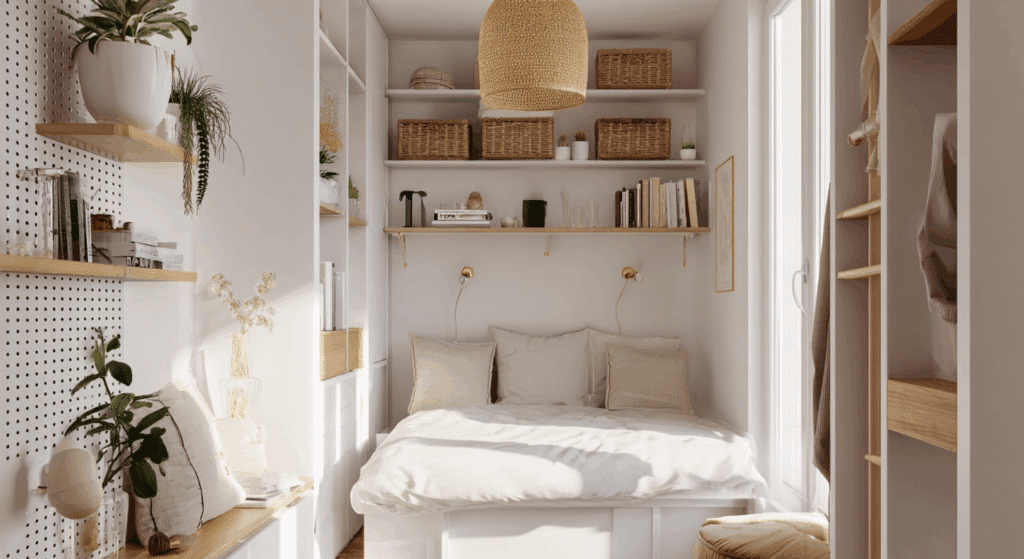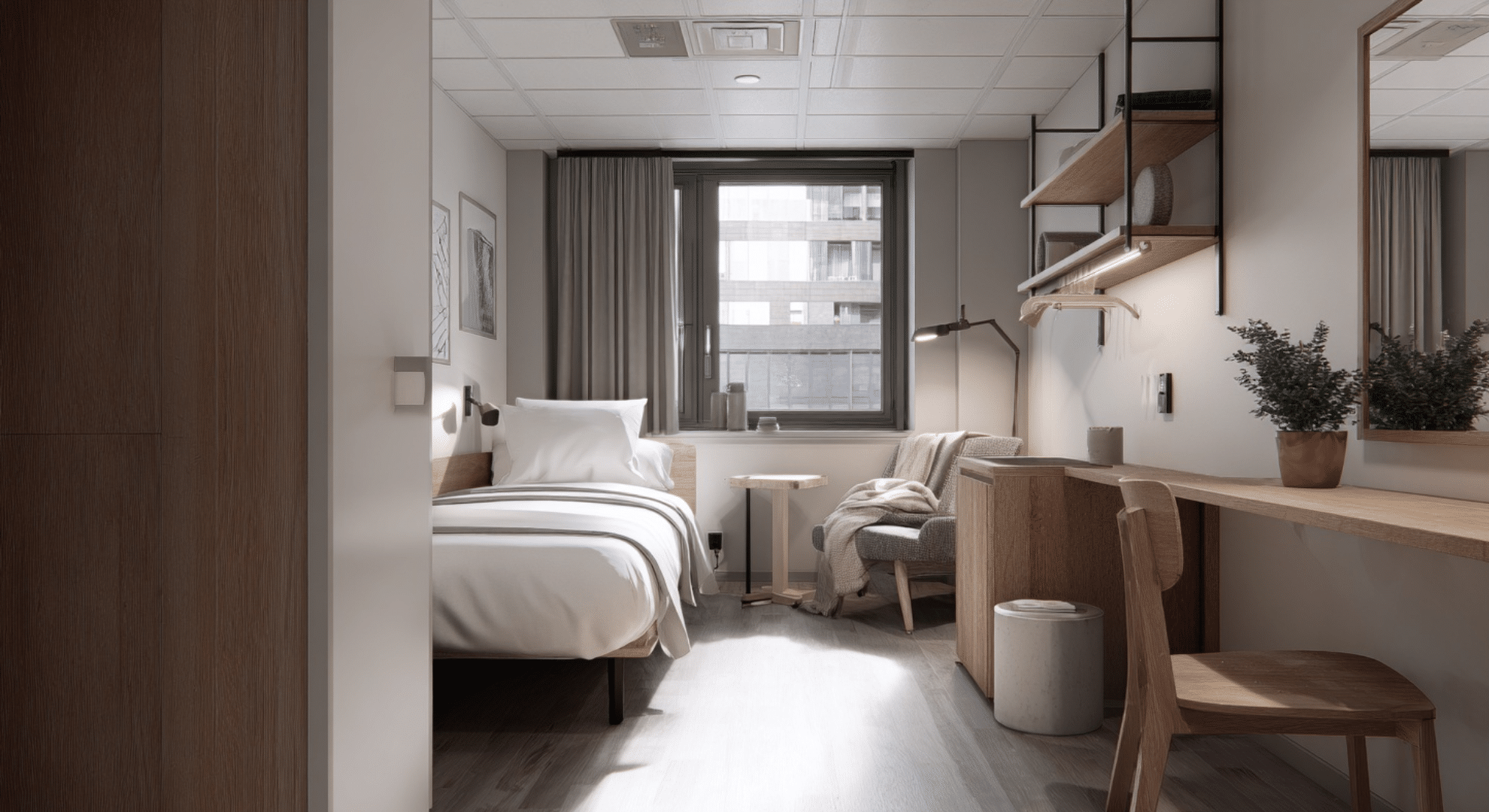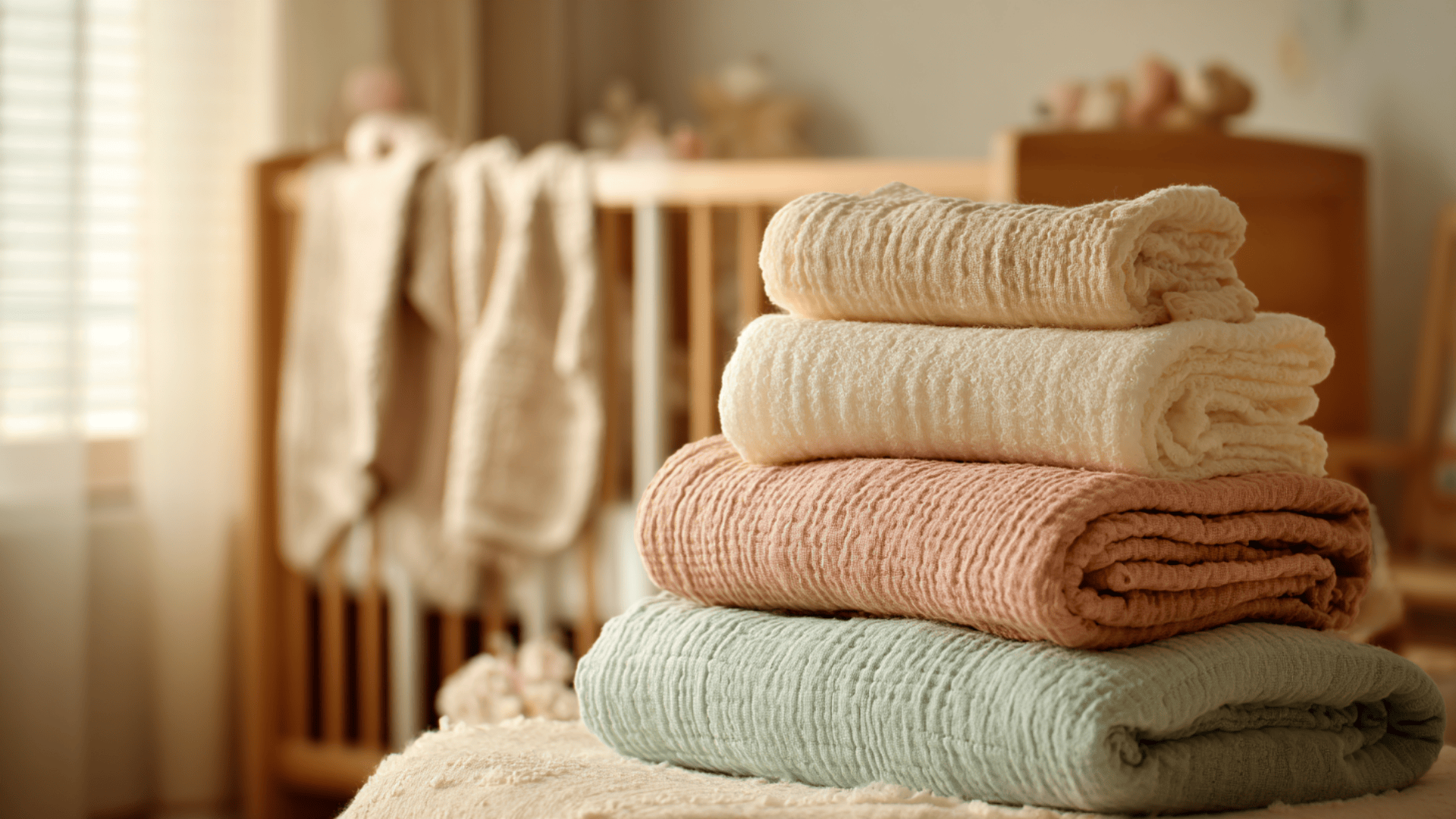I’ve often walked into a room and wondered why it felt smaller than it really was. Over time, I realized it wasn’t the square footage, it was how light, layout, and color worked together to shape what I saw.
Learning how to make a room look bigger changed the way I approached every design choice.
You’ll see that the goal isn’t to rebuild your space but to rethink it. With the right lighting, balanced furniture, and a few smart visual tricks, you can open up even the tightest corners.
This guide will walk you through practical steps, color tips, and layout habits that help your space feel bright, open, and inviting so your room finally looks as spacious as it should.
Why Rooms Look Smaller Than They Are?
Rooms can feel smaller than they are because your brain reads visual cues like light, clutter, and layout to judge space.
Poor lighting creates dark corners that make walls appear closer together, while clutter breaks visual flow, making the eye stop and start instead of scanning smoothly.
Visual barriers, like tall furniture or heavy curtains, block sightlines and divide the room mentally into smaller sections.
Color, scale, and proportion also play psychological tricks. Dark or overly saturated colors absorb light, while light, cool tones reflect it, making the space seem more open.
Oversized furniture can overwhelm a room, while balanced proportions between furniture and wall space help maintain balance.
Together, these design and sensory factors influence how your brain perceives depth, openness, and balance, proving that room size is often as much about perception as it is about measurement.
Step-by-Step Design Plan: How to Make a Room Look Bigger
Designing a small space isn’t about doing more: it’s about doing it smartly. Follow this simple step-by-step plan to create a layout that feels open, balanced, and naturally spacious:
1. Map Out the Space: Start with a quick sketch or digital layout. Mark windows, doors, and outlets so you can plan around them. Seeing your space on paper helps spot tight zones and potential flow issues before moving anything.
2. Establish a Clear Focal Point: Choose one area to draw attention to, like a window, fireplace, or feature wall. Center your layout around it. A single focal point brings balance and directs the eye, making the room feel calm and open.
3. Balance Scale and Proportion: Mix large and small pieces thoughtfully. Pair one big sofa with lighter chairs or slim tables. Even spacing between items keeps visual weight balanced, preventing corners from feeling heavy or cramped.
4. Guide the Eye with Flow: Use long rugs, low furniture lines, or aligned artwork to lead the eye across the room. This horizontal flow makes the space appear wider and smoother.
5. Layer Depth with Texture and Light: Blend matte and glossy finishes to create contrast without clutter. Reflective accents like glass, metal, or gloss paint bounce light and add quiet depth that feels spacious.
6. Edit and Simplify: Step back, take photos, and assess the visual balance. Remove anything blocking sightlines or creating clutter. A well-edited space feels open, intentional, and naturally larger.
Simple Tricks to Make a Room Look Bigger
Even small rooms can feel open and airy with a few smart design choices. These simple tricks help you use light, layout, and color to make your space look and feel noticeably larger:
1. Use Light Colors on Walls
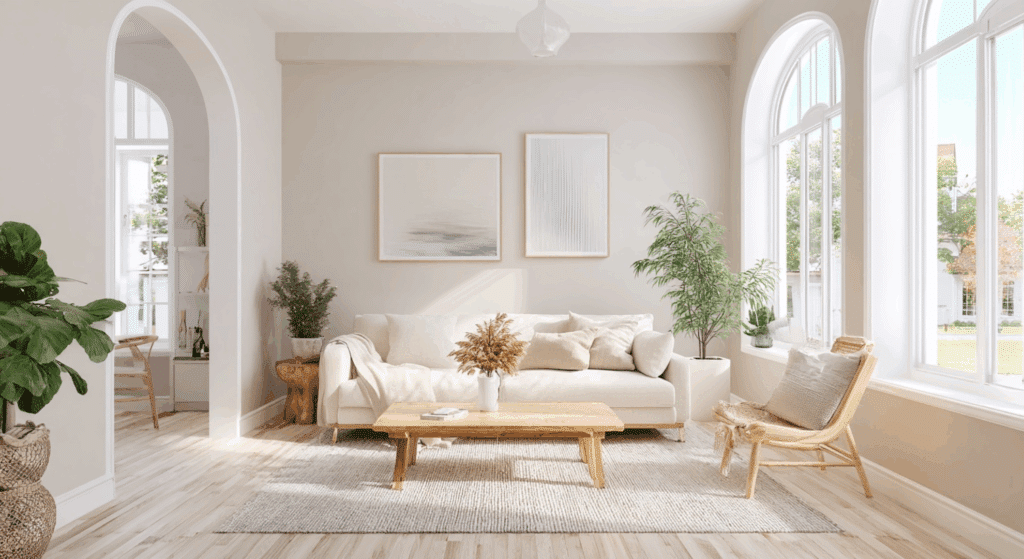
Light shades like white, beige, and soft gray reflect light and make walls recede visually. This creates a sense of openness and airiness.
Avoid dark or bold colors, which absorb light and make rooms feel smaller. For extra brightness, choose satin or eggshell finishes that bounce light across the space.
2. Add Mirrors Strategically
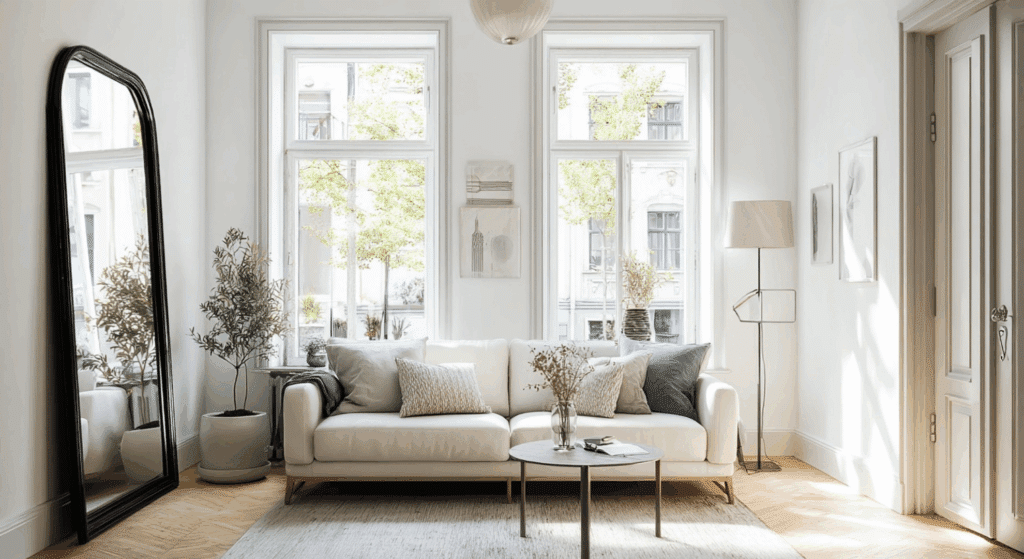
Mirrors double the sense of space by reflecting both light and views. Place them opposite windows or light sources to amplify brightness.
A large wall mirror or mirrored furniture instantly opens up tight areas and gives the illusion of depth. Even small mirrors can make corners feel less boxed in.
3. Maximize Natural Light

Keep windows uncovered or use sheer curtains that let sunlight filter through. Natural light expands a room’s visual boundaries, softening edges and reducing shadows.
Avoid heavy drapes or blinds that block brightness. If privacy is a concern, try frosted film or light-filtering shades instead of dark coverings.
4. Choose Low Furniture
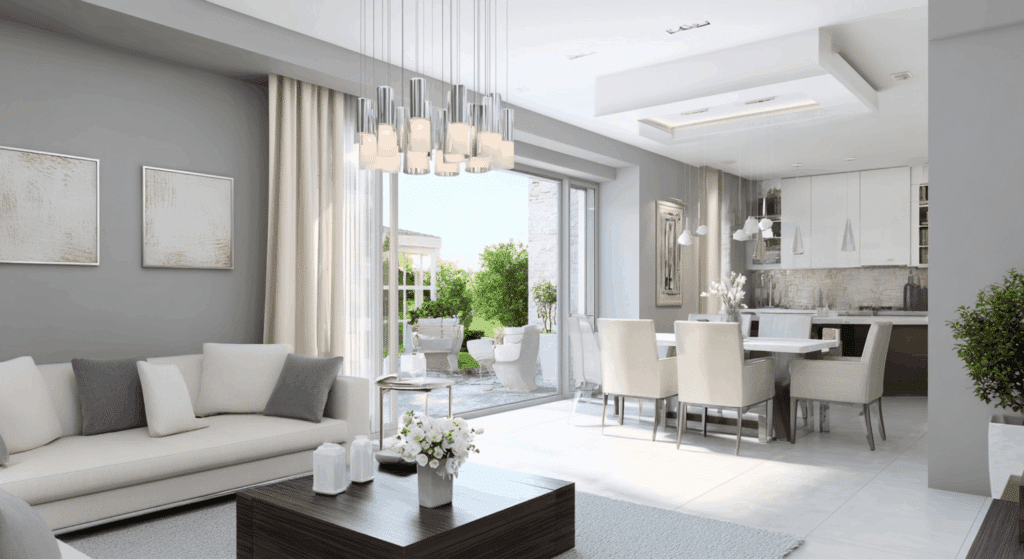
Low-profile furniture opens up vertical space, making ceilings seem higher. Sofas, beds, and chairs with short legs and open bases help air and light move freely underneath.
This trick gives the illusion of a more spacious, breathable room while maintaining comfort and function in small spaces.
5. Declutter Surfaces
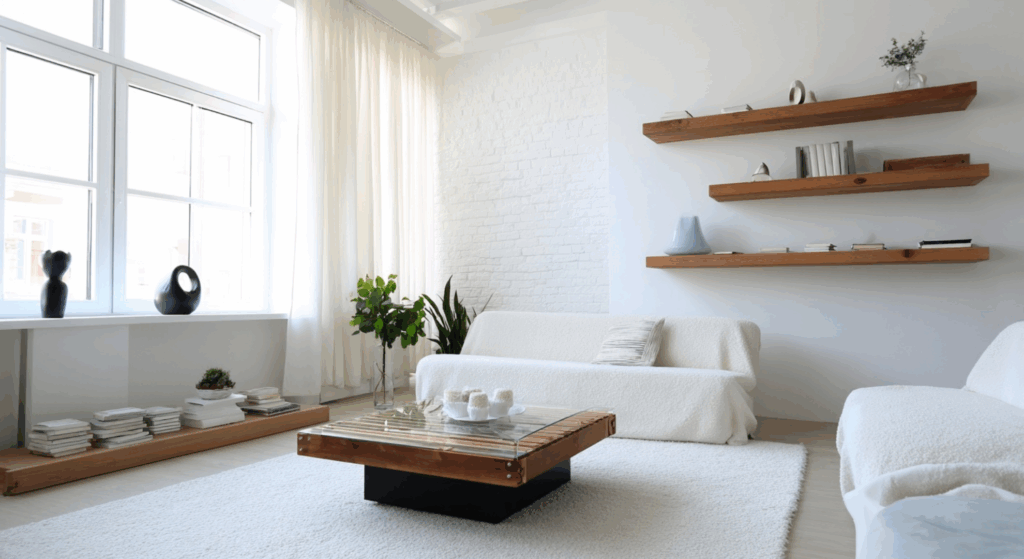
A clean, uncluttered space instantly looks larger. Keep tabletops, shelves, and counters minimal by storing items out of sight. Visual noise from too many decorations makes rooms feel cramped.
Focus on a few key pieces instead each with purpose or meaning, to maintain openness and simplicity.
6. Use Multi-Functional Furniture

Opt for furniture that serves more than one purpose, like ottomans with storage, foldable desks, or sleeper sofas.
This minimizes clutter and maximizes functionality without overwhelming the room. Keeping fewer but smarter pieces maintains visual flow and helps every inch of space work harder for you.
7. Hang Curtains Higher
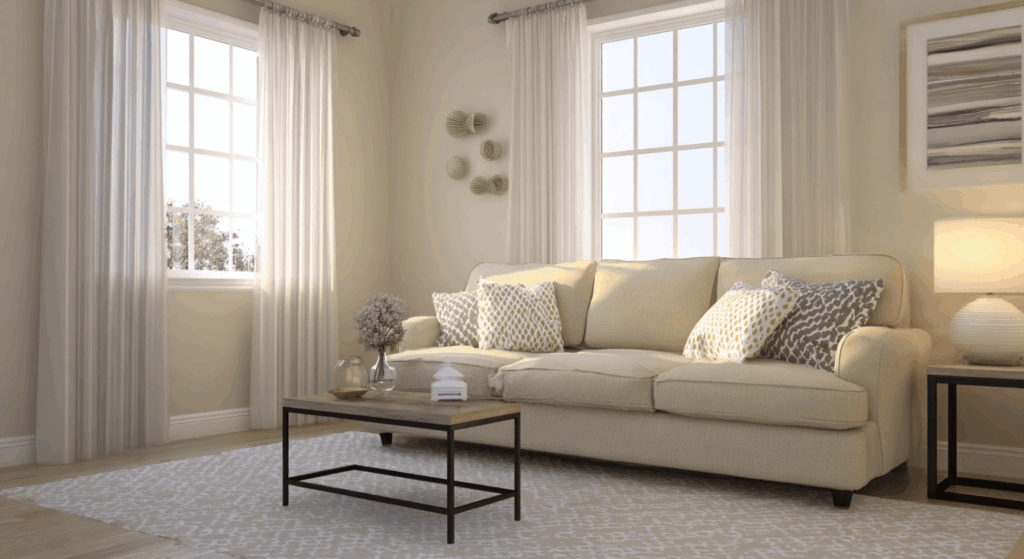
Mount curtain rods closer to the ceiling instead of just above the window frame. This draws the eye upward and makes walls look taller.
Choose light, flowy fabrics that skim the floor to create an elegant, elongated effect without blocking natural light or airflow.
8. Create Vertical Lines

Vertical design elements, like striped wallpaper, tall bookshelves, or floor-to-ceiling drapes—make a room feel taller and more spacious.
These lines naturally guide the eye upward, expanding visual height. This simple design trick helps balance proportions, especially in rooms with low ceilings or small footprints.
9. Keep Flooring Consistent

Using the same flooring throughout connected spaces creates seamless flow and makes rooms appear larger. Visual breaks, like different tiles or rugs, can divide areas and shrink the overall look.
If you choose wood, laminate, or vinyl, continuous flooring enhances openness and unity.
10. Choose Glass or Lucite Furniture
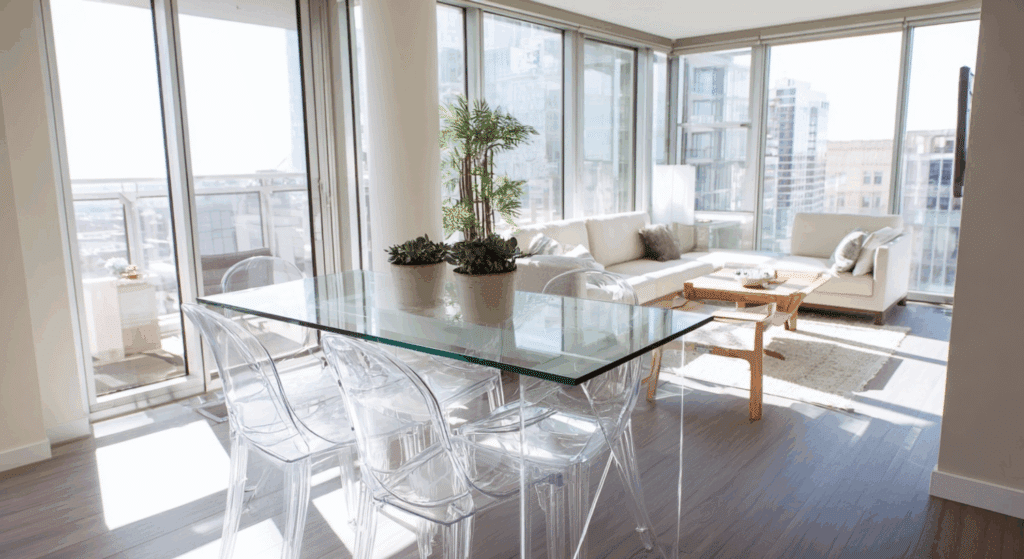
Transparent materials, like glass tables or acrylic chairs, reduce visual weight while keeping functionality. These pieces let light pass through and don’t obstruct sightlines, which makes rooms appear more open.
They’re perfect for small living rooms or dining areas where every inch counts.
11. Use Built-In Storage

Built-ins save floor space and create clean, integrated storage. From recessed shelving to wall-mounted cabinets, these designs reduce clutter and remove the need for bulky standalone furniture.
Matching the built-in color to the wall also keeps the look seamless, adding depth and cohesion to the room.
12. Go for Large-Scale Art
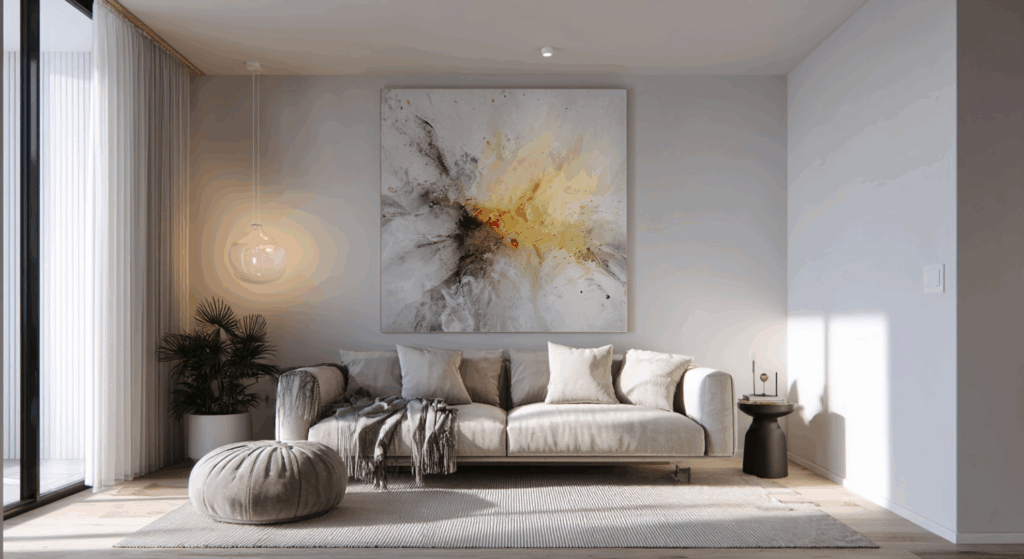
One oversized artwork can make a small room feel more open than several small pieces. Big art draws focus and gives walls a sense of scale, creating balance and minimizing visual clutter.
It’s a simple way to add character without overcrowding your space.
13. Choose Light, Simple Fabrics

Heavy fabrics close in a room, while airy materials like cotton, linen, or voile keep it feeling bright. Use light-colored upholstery and soft textures to maintain openness.
Avoid too many patterns, simple, solid fabrics help the eye rest, enhancing calmness and spaciousness in small areas.
14. Keep Pathways Clear
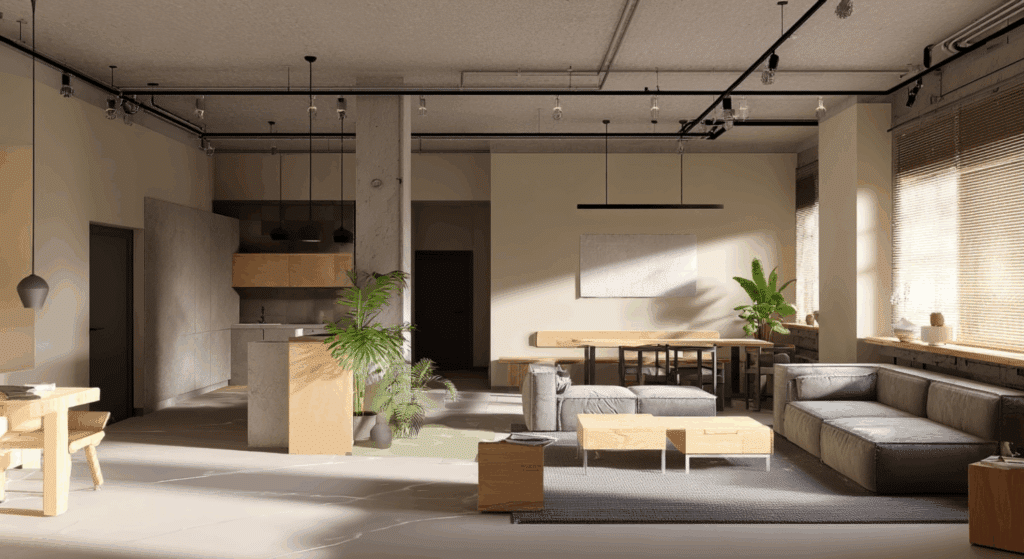
Arrange furniture so there’s an easy flow from one area to another. Avoid blocking entryways or walkways, as tight circulation makes rooms feel crowded.
Even in compact spaces, open paths give the impression of more room and make daily movement smoother and more comfortable.
15. Limit Bold Patterns

Bold prints can overwhelm small rooms. Use subtle patterns or solids to maintain a sense of space.
If you love pattern, include it in small touches like throw pillows or a single accent wall, so the room feels lively but still open and visually balanced.
The Impact of Window Treatments on Room Size
Window treatments play a big role in how large or small a room feels. Heavy drapes or dark fabrics absorb light and make walls seem closer, shrinking the sense of space.
In contrast, light, sheer curtains allow sunlight to pass through, brightening the room and visually expanding its boundaries.
Mounting curtain rods higher than the window frame also helps, this draws the eye upward and makes ceilings look taller. Choosing treatments that match the wall color creates a seamless transition, keeping the focus on natural light rather than fabric bulk.
Even blinds can influence perception; slim, horizontal styles make windows appear wider, while vertical blinds emphasize height.
The goal is to control light without blocking it. When used thoughtfully, window treatments act as quiet design tools, shaping how you perceive depth, openness, and proportion throughout a space.
How to Use Lighting Color Temperature to Your Advantage
Lighting color temperature affects how you perceive space, mood, and depth. Warm lighting, typically around 2700K to 3000K, casts a soft yellow glow that feels cozy and intimate.
It works best in bedrooms and living rooms, where comfort matters most, but it can also make small rooms feel slightly smaller by adding visual warmth.
Cool lighting, between 4000K and 5000K, emits a brighter, bluish tone that mimics daylight. It sharpens details, enhances contrast, and helps spaces appear larger and cleaner.
Cool light works well in kitchens, bathrooms, and work areas where clarity is key.
Combining both types strategically can balance comfort and openness, for example, using warm light for ambiance and cool light for task zones.
Adjusting color temperature isn’t just about brightness; it’s about shaping how your eyes read size, texture, and energy within a room.
How to Balance Function and Aesthetics in Small Spaces
Designing a small space means every choice must work double duty. Start by prioritizing function, choose furniture that offers storage, flexibility, or multiple uses, like a bed with drawers or a fold-out desk.
Keep pathways open and layouts simple to maintain flow and comfort.
Once the function is set, layer in the visuals thoughtfully. Opt for a cohesive palette that ties elements together and makes the room feel unified.
Balance form and practicality by editing often. Remove anything that doesn’t serve a purpose or balance.
In small spaces, design success comes from restraint, where every item contributes to both how the room works and how it feels.
Habits That Keep Your Room Feeling Spacious
A roomy feel isn’t just about design, it’s about daily habits that keep clutter under control and light flowing freely. Simple routines can make even small spaces feel open and calm.
- Put items away every day instead of letting them pile up.
- Keep surfaces like desks and dressers mostly clear.
- Use open shelving to store essentials neatly and visibly.
- Rotate decor seasonally to prevent overcrowding.
- Keep windows clean and free from heavy coverings.
- Fold blankets, clothes, and linens instead of tossing them aside.
- Empty trash bins and laundry baskets regularly.
- Do a quick 5-minute tidy-up before bed each night.
Consistent small habits make a big difference. By keeping clutter in check and maintaining openness, your room will always feel lighter, larger, and more relaxing—without needing to redecorate.
Conclusion
I’ve learned that small rooms can feel open and comfortable with just a few thoughtful changes.
Simple tweaks like better lighting, lighter colors, and cleaner layouts can completely change how a space feels without spending much. That’s the real value of understanding how to make a room look bigger.
Now it’s your turn to try it. Look around your space and see what you can adjust today, maybe it’s moving furniture, clearing clutter, or letting in more light.
You’ll be surprised at how quickly the room starts to feel larger and calmer. Keep experimenting and refining until it feels just right.
And when you’re ready for more ideas, check out other home design blogs for simple, practical tips that work!



